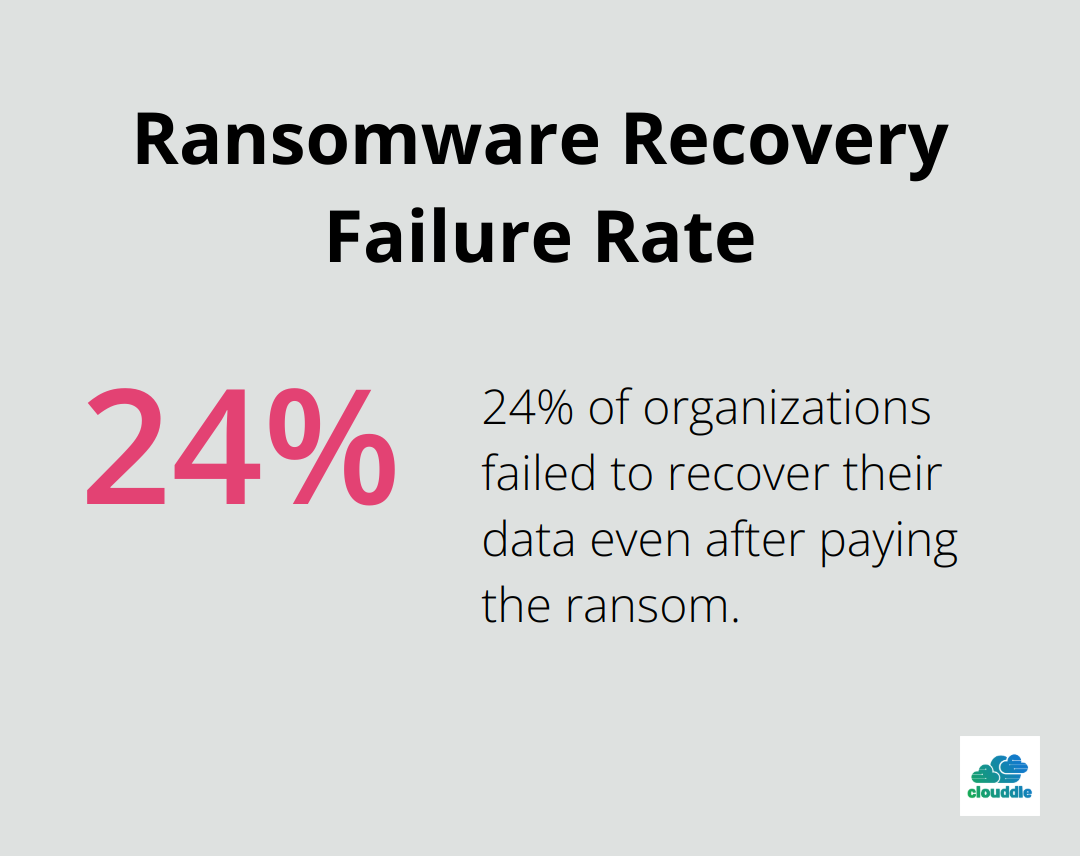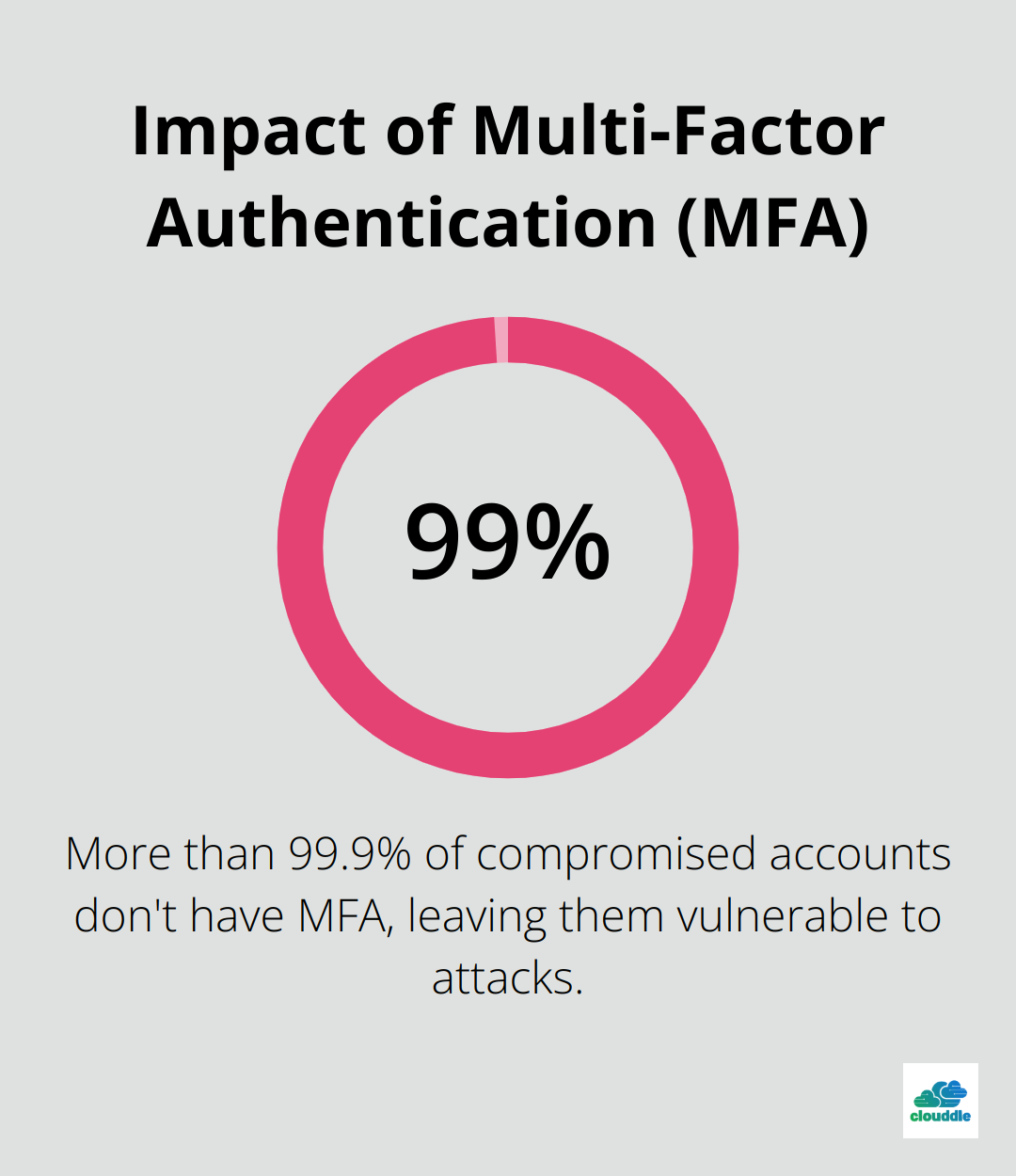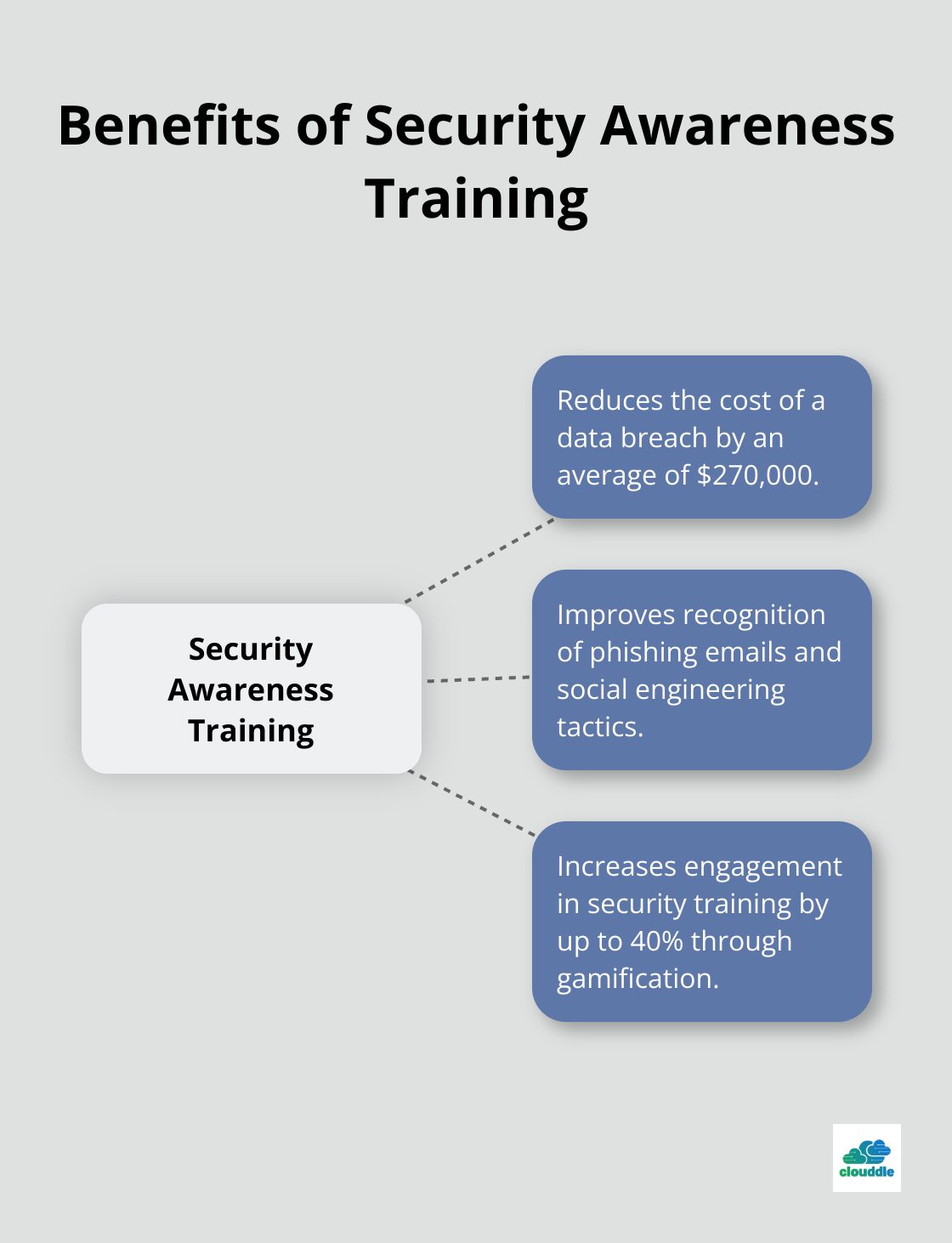In today’s digital landscape, protecting your organization’s assets from cyber threats is more critical than ever. Network security essentials form the backbone of a robust defense strategy, safeguarding sensitive data and maintaining business continuity.
At Clouddle, we’ve witnessed firsthand the devastating impact of security breaches on companies of all sizes. This post will explore the key measures and best practices to fortify your network against evolving threats and keep your digital assets secure.
How Cyber Threats Continue to Evolve
The digital landscape shifts constantly, and with it, the nature of cyber threats. This evolution demands a proactive approach to network security.
The Ransomware Epidemic
Ransomware attacks have become more prevalent and costly. In 2021, these attacks cost US businesses 9 billion in downtime alone. More alarmingly, 24% of organizations failed to recover their data even after paying the ransom. This fact underscores the need for robust backup systems and comprehensive security measures.

Social Engineering: Exploiting the Human Factor
While technological defenses play a crucial role, human error remains a significant vulnerability. Phishing attacks (a form of social engineering) cost companies an average of $14.8 million per year in the United States. These attacks often bypass traditional security measures by exploiting human trust and lack of awareness.
Zero-Day Exploits and Advanced Persistent Threats
Zero-day exploits target previously unknown vulnerabilities in software and operating systems. These attacks can spread rapidly, as evidenced by the WannaCry attack in 2017 (which infected 10,000 devices per hour). Advanced Persistent Threats (APTs) pose an equal concern, as they involve long-term, stealthy infiltration of networks.
The Far-Reaching Impact of Cybersecurity Breaches
The consequences of a successful cyber attack extend far beyond immediate financial losses. Data breaches can lead to reputational damage, loss of customer trust, and regulatory fines. For instance, companies that fail to comply with GDPR face fines of up to 4% of their global annual turnover.
Moreover, the increasing interconnectedness of business systems means that a breach in one area can have far-reaching consequences across an organization. This interconnectivity amplifies the potential impact of cyber attacks, making comprehensive network security more critical than ever.
As cyber threats continue to grow in sophistication, organizations must stay informed and implement robust security measures. The next section will explore essential network security measures that can help protect your digital assets from these ever-changing threats.
How to Fortify Your Network
Network security requires a multi-layered approach that combines various technologies and practices. A comprehensive security strategy can make the difference between a minor incident and a catastrophic breach.
Firewalls: Your First Line of Defense
Firewalls act as a barrier between your internal network and external threats. They monitor incoming and outgoing traffic, blocking suspicious activity based on predetermined security rules. Modern Next-Generation Firewalls (NGFWs) offer advanced features like application-level inspection and intrusion prevention.
For optimal protection, implement both network-based and host-based firewalls. Network firewalls protect your entire network, while host-based firewalls safeguard individual devices. This dual approach creates multiple layers of security, significantly reducing the risk of unauthorized access.
Encryption: Securing Data in Transit and at Rest
Encryption protects sensitive data from interception and theft. It scrambles your data into an unreadable format, which can only be decrypted with the correct key. Use end-to-end encryption for all sensitive communications and data transfers.
For data at rest, full-disk encryption is a must. It protects your data even if a device is lost or stolen. Many operating systems now offer built-in encryption tools (such as BitLocker for Windows and FileVault for macOS).
Access Control: The Principle of Least Privilege
Strict access control measures prevent unauthorized data access. The principle of least privilege (PoLP) states that users should only have the minimum levels of access necessary to perform their job functions.
Role-based access control (RBAC) assigns access rights based on job roles rather than individual users, making it easier to manage permissions as employees join, leave, or change roles within the organization.
Multi-factor authentication (MFA) adds an extra layer of security by requiring two or more forms of identification before granting access. According to Microsoft, more than 99.9% of compromised accounts don’t have MFA, which leaves them vulnerable to password spray, phishing, and password reuse. Implement MFA for all user accounts, especially those with elevated privileges.

Regular Security Audits: Staying One Step Ahead
Security is not a set-it-and-forget-it task. Regular security audits and vulnerability assessments identify and address potential weaknesses in your network.
Automated vulnerability scanners help identify known vulnerabilities in your systems and applications. However, complement them with manual penetration testing to uncover more complex vulnerabilities that automated tools might miss.
Conduct comprehensive security audits at least annually, with more frequent assessments for critical systems or after significant changes to your network infrastructure. These audits should cover all aspects of your network security (including firewall rules, access controls, patch management, and employee security awareness).
The implementation of these essential network security measures significantly enhances your organization’s resilience against cyber threats. However, technology alone does not suffice. The next section explores best practices for maintaining network security, including the critical role of employee training and incident response planning.
How to Maintain Strong Network Security
Empower Your Employees
Your staff form your first line of defense against cyber threats. Regular training sessions are essential. Focus on recognizing phishing emails, social engineering tactics, safe browsing habits, and the importance of strong passwords.
A study shows that security awareness training can reduce the cost of a data breach by an average of $270,000. Make training interactive and engaging. Use simulated phishing attacks to test and reinforce learning. Gamification can increase engagement in security training by up to 40%.

Update Software Regularly
Outdated software creates vulnerabilities for hackers. Implement a robust patch management system to ensure all software and systems remain up-to-date. This includes operating systems, applications, plugins, and firmware.
Set up automated updates where possible, but don’t rely on them entirely. Review your update status regularly and prioritize critical security patches.
Create an Incident Response Plan
Prepare for potential breaches. Develop a comprehensive incident response plan that outlines clear steps to take in the event of different types of security incidents.
Your plan should include:
- Roles and responsibilities of team members
- Steps for containing and eradicating the threat
- Communication protocols (internal and external)
- Procedures for preserving evidence
- Steps for system recovery
Test your plan regularly through tabletop exercises and full-scale simulations.
Implement Comprehensive Backup Strategies
In the event of a ransomware attack or system failure, backups can save your business. Implement a comprehensive backup strategy that follows the 3-2-1 rule: three copies of your data, on two different media, with one copy off-site.
Automate your backups and test them regularly to ensure quick restoration.
Network security requires continuous attention. Stay informed about emerging threats, reassess your security measures regularly, and adapt as needed. These practices will equip you to protect your digital assets in an ever-evolving threat landscape.
Final Thoughts
Network security essentials form the foundation for protecting digital assets in today’s threat landscape. A multi-layered approach combines robust technologies, employee training, and proactive strategies to safeguard organizations against cyber threats. Regular security audits and vulnerability assessments help identify potential weaknesses before exploitation, while comprehensive security awareness training empowers employees to recognize and mitigate risks.
The field of network security will continue to evolve, with increased adoption of artificial intelligence in threat detection and new security paradigms driven by remote work trends. Organizations must stay informed and adapt their security measures to protect their digital assets effectively. This ongoing process requires vigilance and continuous improvement to stay ahead of emerging threats.
We at Clouddle understand the critical importance of network security in the digital landscape. Our managed IT and security services help businesses protect their valuable digital assets while focusing on growth and innovation. We invite you to explore how our expert support can enhance your organization’s security posture and provide peace of mind in an increasingly complex digital world.


